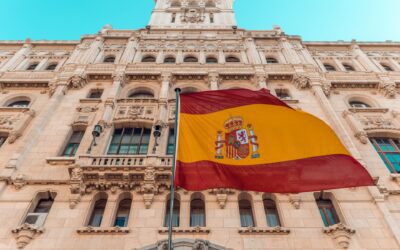|
|
Digital nomads can enjoy La Dolce Vita in Italy now that the comprehensive guidelines and requirements for the Italy Digital Nomad Visa have been approved. This visa has been in the works since January 2022, so we are pleased that we finally have the green light.
But what are the requirements for the digital nomad visa and what can you expect from life in Italy as a digital nomad?
Visa Terms and Requirements
This is one of the visas specifically designated for digital nomads, described as highly skilled workers who can work remotely. They can be either freelancers or traditional employees if their income comes from outside of Italy.
The visa is granted for one year at a time and can be renewed as long as the application continues to meet the terms and conditions. Since there is no cap, this means that the visa could be a pathway to permanent residence, which can be applied for after five years.
You can be accompanied by direct family members, which means your spouse or partner, dependent children under the age of 18, and parents in some circumstances.
So, what are the requirements?
- The minimum income is set at three times the Italian minimum wage for exemption from healthcare participation, which is EUR 8,400 for most Italians, making the minimum annual wage for digital nomads EUR 25,200 per year, of EUR 2,100 per month. This makes it one of the most accessible in the world.
- Full health insurance for the duration of the visa.
- Proof of accommodation in Italy for the first part of your stay.
- Proof of your valid employment and that you have been in the role for at least six months at the time of application. If you are employed, you should submit a certification signed by your employer.
- A self-declaration that you are free from criminal convictions in your other countries of residence.
You should apply for the visa at your closest Italian consulate or embassy as you would any other long-stay visa for Italy. If the visa is granted, it will allow you to travel to Italy, and when you arrive you should apply for a residence permit within eight days of arrival. At the same time, you will be issued with a tax code. If a bilateral agreement exists between your home country and Italy, you will pay taxes in your home country, if not, you will need to pay in Italy.
You should expect the visa application fee to be EUR 116, and EUR 76 for the residence permit once you arrive.
This visa compliments a variety of other programs already launched by the government to encourage foreigners to take up residence in some Italian villages with falling populations.
Italy for Digital Nomads
What can you expect from life in Italy as a digital nomad? Tasty, fresh Italian food, excellent and affordable wine, fantastic coffee (just never ask for a cappuccino), and streets steeped in art and history. Italy is one of the most popular tourist destinations in the world for a reason, and those same reasons make it an attractive home for digital nomads.
Italy also has everything that a remote worker needs to thrive including lots of short-term accommodation options, a choice of excellent remote working spaces, generally fast internet, and a coffee culture that lets you work from the street.
Cost of Living in Italy
Italy has a highly affordable cost of living by European standards. Numbeo estimates that a single person can live off less than US$1,000 per month, excluding rent. Good food is particularly affordable as long as you steer clear of restaurants in the tourist areas. Public transport is also very good, with big cities like Rome served by a very good metro system and a good train service between cities.
Rents are affordable, and you can expect to pay between US$600-1,000 per month depending on where you are and the size of the place. You may well be able to find a rental contract for less than a year on the local market, which tends to be flexible. There are also lots of Airbnb options, but you can expect to pay twice as much as the local market.
Italy’s Best Cities
It is hard to find an Italian city or village that you don’t fall in love with from the Mediterranean beaches to the rolling green hills of Umbria. But these are some of Italy’s best cities for digital nomads and what to expect from them.
Roma (Rome)
It feels like this one kind of goes without saying. Rome is Italy’s historical capital that served as the center of the Roman Empire. Every street is filled with historical monuments and museums. But as a big and bustling modern city, you can also expect a strong café, restaurant, and bar culture, live music, and alternative culture. Plus, it is one of the European capitals of high-end fashion along with Paris and Milan.
Rome is so grand and diverse that it even contains an entire country, Vatican City, which is the capital of the Catholic world and the only place to see the Sistine Chapel. Rome is also very explorable, and you can get almost anywhere by walking the fascinating streets and jumping on a combination of metro, tram, and train. It is also well connected to the rest of the country by both train and plane.
Read our guide to Rome for digital nomads here.
Naples is not far from Rome and also a wonderful place to live. Read our guide to Naples for digital nomads here.
Firenze (Florence)
Located in romantic Tuscany, Firenze is considered the birthplace of the Renaissance and an artistic powerhouse. This is where you will find Michaelangelo’s David. It has some unmissable attractions including the Cathedral and Duomo, Uffizi Gallery, Ponte Vecchio, and Galleria dell’Accademia. This is a great place if you want to absorb Italian life since it is a vibrant city, but you walk from one end of the city to the other in just an hour.
Read our guide to living in Florence as a digital nomad here.
Milano (Milan)
Milan is considered the fashion capital of the world and is Italy’s economic powerhouse. If you are interested in fashion, this is the place to be. It is yet another city steeped in history and is where you can see Leonardo Da Vinci’s Last Supper. Milan feels a bit more fast-paced than many other Italian cities and will appeal to those seeking excitement.
Bologna
Bologna is home to one of the world’s oldest universities, and that has characterized the development of the village into a city. It is full of interesting museums and cultural destinations and is just a beautiful city.
Although more centrally located, Bologna is also an ideal base for exploring the north of Italy. You are just an hour or so from Venice, which is a must-visit but is too touristy to form a long-term base for nomads. You are also not far from the beautiful Lake Garda. If you head east, you are on the Adriatic coast, and you can also visit the small city-state of San Marino.
Pisa
Known for its leaning tower, Pisa is the ideal base for accessing Italy’s west coast. The city itself has more than 20 historic churches medieval palaces, and beautiful architectural sites. You are also just a short distance from colorful beach villages like the Cinque Terre, which are five small coastal villages that many visitors choose to walk between, stopping for swims and gelato along the way.
Pros and Cons of Italy for Digital Nomads
There are so many reasons why Italy makes a wonderful place for digital nomads. It is hard to know where to start the list, but let’s try.
- The culinary experience – Italian food is awesome, especially when it is made by Italian grandmothers using fresh farm-to-table ingredients. Partner this with fresh Italian wines, olive oils, and liquors, and there we are talking heaven. Food is a cultural phenomenon in Italy, which makes it a great bonding experience for meeting new people, and it tends to be very affordable.
- Friendly Culture – Italy also has a very friendly culture. It is not hard to meet new people while you are on the street doing what interests you, and when they learn that you are new, they are very likely to adopt you as a member of the family. You should let them.
- The History – There are 58 UNESCO World Heritage Sites in Italy, and thousands more other places that reflect the long history of Italy as the center of the Roman Empire, the Holy Roman Empire, and the Renaissance, and even less pleasant modern history such as Mussolini’s Italy. There is no shortage of fascinating things to discover.
- The Beautiful Country – Italy is beautiful. It has miles and miles of Mediterranean coastline, green hills filled with vineyards and olive plantations, stunning lakes such as Lake Guarda, and even slopes for skiing up in the north.
- An Old-Fashioned Feel – While Rome is a major metropolis, most of Italy’s other cities, while vibrant and full of amazing restaurants and international museums, they are built around small-town architecture, which means that they still feel like village communities, just on a much larger scale.
- Affordable Cost of Living – Italy is incredibly affordable by European standards when it comes to both food and rent. While you can expect to pay more in central Rome or Milan, overall, you can live well in Italy for less than US$2,000 per month, including rent.
- Excellent Transport Links – Located in the center of Europe, it is not hard to get to Italy, or from Italy to anywhere else in the world. Within Italy, it is also easy to get around. There are very good train services and bus services between the different cities, and when you arrive, public transport tends to be plentiful and affordable, though there are few things more enjoyable than just walking around.
- The Visa – Now that Italy has launched its digital nomad visa, it has never been easier for remote workers to visit. The income threshold is highly accessible, and it potentially offers a pathway to permanent residence.
OK, so what are the downsides of living in Italy as a digital nomad?
- Overtourism – Italy can be pretty touristy because it is such a beautiful and fascinating place. You have to work hard to avoid overspending in tourist traps and being harassed on the street to buy.
- English Not Widely Spoken – English is not widely spoken in Italy, despite its location and tourism levels. Plus, if you really want to get outside the tourist areas and enjoy yourself, you need to learn some Italian. But Italian is a beautiful language.
- Smoking – Smoking is very common in Italy still, even in public spaces. If you have become accustomed to not being attacked by the smell of cigarette smoke, it can be an adjustment.
- Economy – If you are hoping to work in Italy, the weak economy, high unemployment rate, and complex bureaucracy can be major barriers. While this should not be a direct issue for many digital nomads, these issues do form part of current life in Italy.
While these are all issues to be aware of, they certainly don’t outweigh the positives.
Will You Apply for the Italy Digital Nomad Visa?
It is fair to say that this is one of the digital nomad visas that we have been most excited about, and I’m sure that we are not the only ones. The Italian government has said that they have not put a cap on the number of visas they will issue. We think that there will be lots of applicants and look forward to seeing the stats in a few years.












